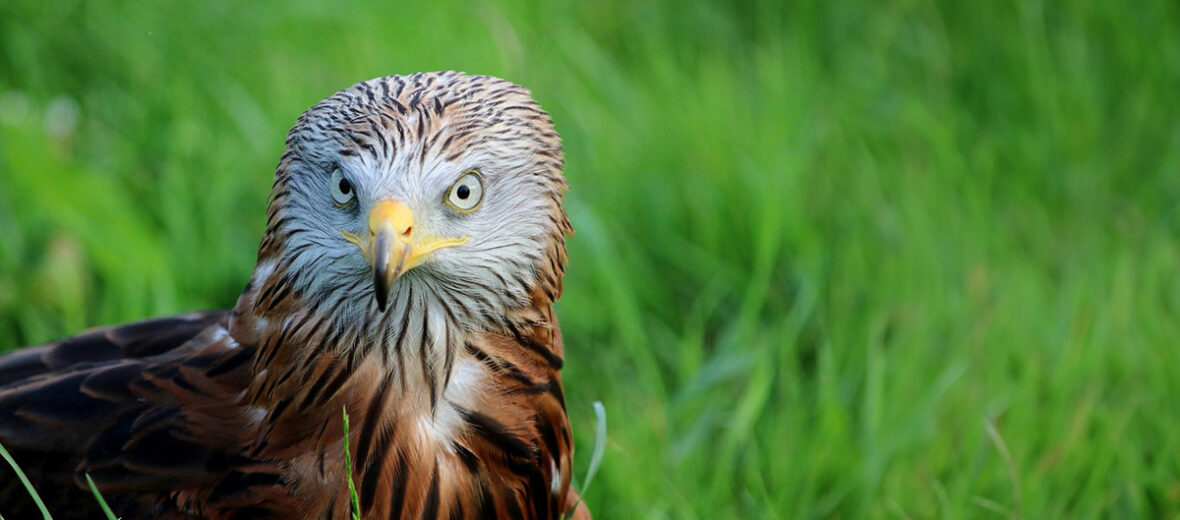
The red kite hails from the same family as buzzards, eagles, & harriers. They can be found throughout western and eastern Europe, Northern Africa, and into Iran. These raptors tolerate a range of habitats from pastures, valleys, heathlands, broadleaf woodlands, thickets that contain grasslands, wetland edges, and suburban gardens & groves. Even though they face the threats of habitat loss, destruction, and division at the hands of residential and commercial developments, renewable energy, roads & railways (which can lead to vehicle strike – getting hit by vehicles), and logging; hunting; trapping; and pollution, these birds of prey are abundant and are thus listed as Least Concern by the IUCN. Their population trend is listed as increasing.
First the Stats…
Scientific name: Milvus milvus
Weight: Up to 45.9 ounces
Length: Up to 27.56 inches
Wingspan: Up to 70.47 inches
Lifespan: Up to 26 years
Now on to the Facts!
1.) Their total wild numbers are estimated at around 70,000+/- individuals.
2.) Red kites are diurnal (active during the day).
3.) They can be found individually, in pairs, or in smaller roosts during migrations.
4.) A group of kites is called a roost, stooping, brood, kettle, or string.
5.) These raptors hunt by perching and waiting for passing prey to happen by or by soaring low above the ground in search of prey animals.
But wait, there’s more on the red kite!
6.) While mostly silent, they can produce high-pitched “rriu-rri-rri” and/or a “kiou-ki-ki-ki” calls.
7.) Rats, mice, shrews, voles, young hares, rabbits, lizards, amphibians, birds, earthworms, and carrion (dead animals) are all preyed on or feasted upon.
Did you know…?
When caring for their chicks, the female will sometimes emit a call to her chicks to play dead in the nest, if a predator is nearby.
8.) These birds of prey are monogamous (mate for life).
9.) The nest, when built by the male and female with sticks and sheep’s wool, is typically placed in the fork of a tall tree; upwards of 50 feet high. Other times, abandoned nests are utilized. Some individuals reuse the same nest over multiple seasons.
10.) Females lay up to 5 eggs that hatch in up to 38 days.
But wait, there’s still more on the red kite!
11.) Both parents participate in rearing their chicks, which fledge in up to 70 days.
12.) There have been documented instances of kleptoparasitism (stealing food from others), but in this case, stealing food from humans.
13.) Adorning their nest with plastic and/or paper products is not uncommon. They will even go as far as stealing smaller line-drying clothing.
14.) Magpies, crows, or other birds of prey all prey on these raptors.
Now a Short Red Kite Video!
Be sure to share & comment below! Also, check out the Critter Science YouTube channel. Videos added regularly!
Want to suggest a critter for me to write about? Let me know here.
Some source material acquired from: Wikipedia & IUCN



